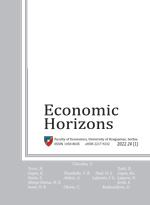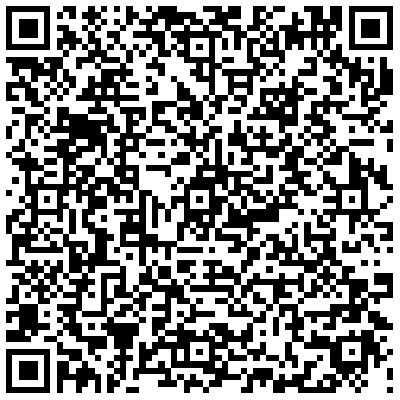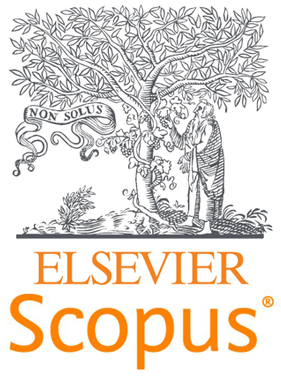Notes for contributors
Manuscripts submitted to the Editor-in-Chief of the journal should be original, unpublished, and they must not be in the review process by any other journal.
Manuscripts should be written in the standard grammatical and stylistic Serbian and English, i.e. only in English, for the authors whose native language is not Serbian.
Authors are advised to comply with the requirements of this journal, otherwise, their manuscript may be returned for correction, before the review process begins.
All manuscripts are subjected to double-blind review process. For this reason, they should contain no references to the author’s(s’) identity.
All manuscripts submitted to the Editorial Board of the Journal are subject to the iThenticate Professional Plagiarism Prevention check.
The journal does not have article processing charges (APCs).
Submitting manuscripts
Authors should submit their manuscripts electronically to e-mail address horizonti@kg.ac.rs, as an email attachment, in: .doc or .docx. formats.
Authors should attach three files:
- one containing the following information: title, author or authors’ names, their age, institutional affiliation, and addresses (e-mail, postal address, telephone number);
- the other containing the manuscript should include the following: title, abstract, key words, JEL Classification, the central part of the paper, figures, tables, graphs, acknowledgement (if there is), references, appendices (if there are), endnotes (if there are);
- the file with the Author's Statement of the Originality of the Manuscript.
Length of the submissions
Manuscripts should contain between 5,000 and 7,000 words, including figures, tables, graphs, references, appendices, and endnotes.
Title of the manuscript
The title should not exceed two lines in length.
Abstract and Key Words
Summing up the aim, content and results of the manuscript, the abstract should contain between 100 and 150 words.
Authors should list 4 to 6 key words which reflect the content of the manuscript.
JEL clasification of the manuscript
According to: Journal of Economic Literature (JEL) Classification System:
https://www.aeaweb.org/jel/guide/jel.php, the author should classify his/her manuscript.
Content
All manuscripts should contain the following: Introduction (in which they explicate the research subject and aims, the main hypothesis to be confirmed in the paper, the chosen theoretical framework and methodology, and in brief, the structure of their paper), the central part of the paper (consisting of chapters and sub-chapters), and Conclusion (in which they sum up the research presented in the paper, and point out the relevant scientific and practical issues for further research).
Figures, Tables and Graphs
Considering the size of the journal’s page, figures can take any of the following formats: TIFF, GIF, JPG, PDF, and CDR. Their resolution should be over 300 dpi.
Tables and graphs can take any of the following formats: Word, Excel, Corel, Visio, and SPSS.
Figures, tables, and graphs should be numbered consecutively; every figure and graph should be titled, and the source (if there is) should be acknowledged; every table should be supplied with a heading and its source (if there is) should be acknowledged.
Since the journal is printed in black and white, it is recommendable that figures be provided in black-and-white or in grey tone.
Acknowledgements
The title and number of the project within which the paper originates, as well as the name of the institution financing the project, or acknowledgement to the reviewers, should be included following Conclusion, i.e. preceding References.
Endnote
Endnotes should be supplied at the end of the manuscript, after the Conclusion.
Footnotes are not accepted.
References
References should be included to refer all the sources used in the manuscript, and they should be easily accessible by readers.
The number of sources refered to in the manuscript should be between 20 and 30.
Authors are invited to refer to works published in this journal, which will provide the coherence and continuity to its readers.
In the text:
- in the case of one reference, the source is acknowledged by a short parenthetical citation: e.g. (Rosenhead, 2005, 115-122);
- in the case of more than one reference, sources should be listed chronologically: e.g. (Midgley, 2000, 225-226; Mingers, 2006, 174).
In the Reference list:
- the list of references should contain all the sources referred to in the text and only those;
- the sources are listed in alphabetical order according to the author’s last name, without enumeration;
- if more than one reference by the same author (or the same group of authors listed in the same order) published in the same year is used, they should be organized in the reference list alphabetically by the title of the article. Then letter suffixes to the year should be assigned. E.g.: Jackson, M. C. (2006a);
- if a reference has a DOI number, then this number should be written at the end of the reference.
All references should be listed following the guidelines of the APA formatting (APA- Publication Manual of American Psychological Association (http://www.apastyle apastyle.org/pubmanual.html)
A book with a single author:
Morgan, G. (1997). Images of Organization. London, UK: SAGE Publications.
A book with two authors:
Flood, R. L., & Romm, N. R. A. (1996). Diversity Management: Triple Loop Learning. Chichester, England: John Wiley & Sons.
A book with more than two authors:
van Marrewijk, C., Ottens, D., & Schueller, S. (2006). International Economics: Theory, Application, and Policy. Oxford, UK: Oxford University Press.
A journal article:
Zhu, Z. (2011). After paradigm: why mixing-methodology theorising fails and how to make it work again. Journal of the Operational Research Society, 62(4), 784-798. doi:10.1057/jors.2010.31
A forthcoming publication:
Fischer, C. (in press). Price convergence in the EMU? Evidence from micro data. European Economic Review.
A chapter in edited volumes:
Brocklesby, J. (1997). Becoming multimethodology literate: An assessment of the cognitive difficulties of working across paradigms. In J. Mingers & A. Gill (Eds.), Multimethodology: The Theory and Practice of Combining Management Science Methodologies (pp. 189-216). Chichester, England: John Wiley & Sons.
A presentation - in a conference proceedings - published in its entirety:
Feret, K. (2011). Serbia and Poland on map of the global air cargo shipment. In V. Babić (Ed.), Contemporary Issues in Economics, Business and Management - EBM 2010 (pp. 3-16). Kragujevac, the Republic of Serbia: Faculty of Economics University of Kragujevac.
Unpublished thesis or dissertation (which should be made available following a request):
Micic, V. (2011). Konkurentnost industrije Srbije kao pretpostavka njenog efikasnog razvoja. Neobjavljena doktorska disertacija, Ekonomski fakultet Univerziteta u Kragujevcu, Kragujevac, Srbija.
A paper presented at a scientific congress, conference, symposium, meeting:
Prochniak, M. (2008, April). Real Economic Convergence between Central and Eastern Europe and the European Union. Paper presented at the conference of the Chinese Economic Association, Cambridge, UK.
Web site:
Waugh, M. E. (2010). International Trade and Income Differences. American Economic Review, 5, 2093-2124. Retrieved March 11, 2012, from http://www.aeaweb.org/aer/contents/index.php
In-text citations:
- The author¢s surname, the year of publication and a reference to page(s): e.g. (Giddens, 2006, 45)
- Direct quoting in the text, e.g.: "In most organizations, data resources are considered to be a major organization asset" (Smith, 2001, 35-36). Or, for example: Brown (2002, 45) states that "the value of data is realized by most organizations".
- A longer quotation, (over 40 words) should appear in a separate block, e.g.:
Example: "As an ever-growing number of people around the world have gained access to e-mail and Internet facilities, it has become clear that the communicative environment provided by these tools can foster language learning. E-mail facilitates access to speakers of one's target language" (Vinagre & Lera, 2007, 35).
The author’s biographical sketch:
At the end of the manuscript, list the basic data related to the author¢s professional biography, in no more than 50 words.
Book reviews
Announcements and reviews of scientific symposiums, conferences, and congresses in the country and abroad
Book reviews and Announcements and reviews of scientific symposiums, conferences, and congresses held in Serbia or abroad are to be sent to the Editor-in-Chief, and they, too, are subjected to the review process.
Book reviews should not exceed the word limit of 1000, including the book’s title, author, publisher, the year of publishing, number of pages, and ISBN number.
A book review should briefly outline the book’s topic, aims, research methods and results as presented in the book, and its advantages and limitations (where appropriate). The book review should include both critical and constructive evaluation of the book’s relevance in theoretically methodological, and practical sense.
The book review should be accompanied by the reviewer’s short professional biography.
Publication ethics
Considering the ethical policy of the Editorial Board, dedicated to prevention of plagiarism, auto-plagiarism, inauthentic data and results, etc., the authors in addition to the manuscript should submit - as an attachment - a signed and scaned The Statement of the originality of the manuscript, which can be downloaded here: The Statement.
Copyright policy
The publisher holds copyright in all the texts published in it.
The authors whose manuscripts are accepted for publication are required to sign a consent form in writing, by which they agree to transfer of the copyright to the publisher.
Hard copies for contributors
Authors whose manuscripts are published are entitled to a hard copy version of the journal, for their personal use.
Editorial Secretary
Authors can require and obtain relevant information related to the submissions forwarded to review, the results of the review process, date of publishing, etc., from the Editorial Secretary at: horizonti@kg.ac.rs




